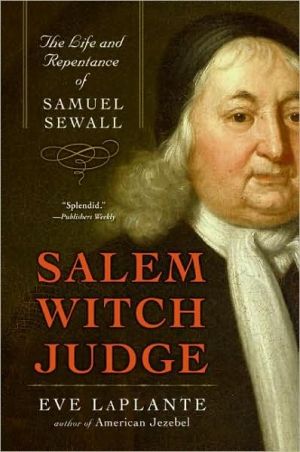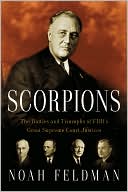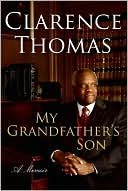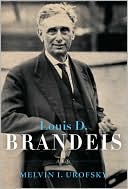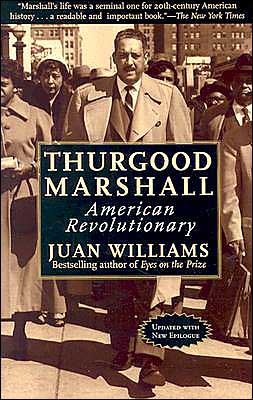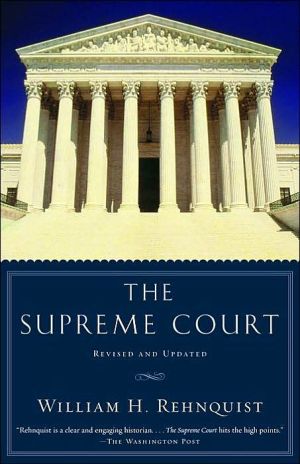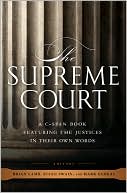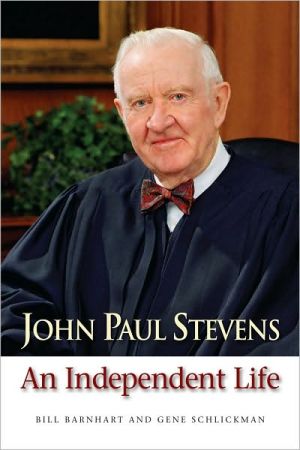Salem Witch Judge: The Life and Repentance of Samuel Sewall
In 1692 Puritan Samuel Sewall sent twenty people to their deaths on trumped-up witchcraft charges. The nefarious witch trials in Salem, Massachusetts represent a low point of American history, made famous in works by Longfellow, Nathaniel Hawthorne (himself a descendant of one of the judges), and Arthur Miller. The trials might have doomed Sewall to infamy except for a courageous act of contrition now commemorated in a mural that hangs beneath the golden dome of the Massachusetts State House...
Search in google:
In 1692 Puritan Samuel Sewall sent twenty people to their deaths on trumped-up witchcraft charges. The nefarious witch trials in Salem, Massachusetts represent a low point of American history, made famous in works by Longfellow, Nathaniel Hawthorne (himself a descendant of one of the judges), and Arthur Miller. The trials might have doomed Sewall to infamy except for a courageous act of contrition now commemorated in a mural that hangs beneath the golden dome of the Massachusetts State House picturing Sewall's public repentance. He was the only Salem witch judge to make amends. But, remarkably, the judge's story didn't end there. Once he realized his error, Sewall turned his attention to other pressing social issues. Struck by the injustice of the New England slave trade, a commerce in which his own relatives and neighbors were engaged, he authored "The Selling of Joseph," America's first antislavery tract. While his peers viewed Native Americans as savages, Sewall advocated for their essential rights and encouraged their education, even paying for several Indian youths to attend Harvard College. Finally, at a time when women were universally considered inferior to men, Sewall published an essay affirming the fundamental equality of the sexes. The text of that essay, composed at the deathbed of his daughter Hannah, is republished here for the first time. In Salem Witch Judge, acclaimed biographer Eve LaPlante, Sewall's great-great-great-great-great-great-granddaughter, draws on family lore, her ancestor's personal diaries, and archival documents to open a window onto life in colonial America, painting a portrait of a man traditionally vilified, but who was in fact an innovator and forefather who came to represent the best of the American spirit. The New York Times - David Waldstreicher Salem Witch Judge, Eve LaPlante's touching biography of Samuel Sewall, who condemned 20 people to death on witchcraft charges, seems hauntingly timely. Beneath the sensational title is a figure more familiar than we may realize…Salem Witch Judge upends popular stereo types about Puritans; it also reminds us how quickly the conventional wisdom can shift, forcing even the powerful to move.
Salem Witch Judge\ The Life and Repentance of Samuel Sewall \ Chapter One\ I Have Signed Against the Lord\ At four in the morning on Monday, December 21, 1685, on the second floor of one of Boston's largest houses, the "faint and moaning noise" of a two-week-old baby forced a father from his warm bed. Wishing to disturb neither his wife nor his child's fitful sleep, he knelt beside the cradle. A bitter wind rattled the shuttered windowpanes of the bedchamber. Outside, snow blanketed the peninsula known to the settlers as Shawmut, an English corruption of an Algonquian word for "he goes by boat."\ Samuel Sewall, a thirty-three-year-old public official, bowed his head over his swaddled baby. The father wore a loose nightshirt. His shoulder-length hair was starting to thin at the crown. In a voice hardly audible, Samuel begged the Lord to extend his grace and favor unto his "weak and sick servant," baby Henry. Reminding God that he loves not only the faithful but also their seed—"not only the sheep of Christ but even the tender lambs"—Samuel asked God "by thine Holy Spirit" to make good his gracious covenant with Sewall's "poor little son."\ Samuel Sewall was used to talking freely with God. He had spent seven years at Harvard College studying for the ministry. He knew much of the Hebrew and Christian Scriptures, in both ancient and modern languages, from memory and was familiar with numerous devotional manuals. The words flowed, but still his feeble child moaned.\ As Samuel prayed the sun rose as it always did over the Atlantic Ocean, the harbor islands, and the cosseted town. Noting the dawn, Samuel determined toseek help. He dressed quickly and descended the stairs to find a manservant to summon the midwife. Goodwife Elizabeth Weeden, who had attended at all his children's births, soon arrived to examine the baby. As news of the child's precarious state spread across town, a circle of prayer made up mostly of female friends and relatives grew inside the house.\ Sewall's wife, Hannah, who was twenty-seven, remained in their bed, where she had spent most of the fortnight since her sixth childbirth. Their firstborn, Johnny, had died seven years before at the age of seventeen months, but their subsequent five children had so far survived. This was a great blessing in a world in which roughly one in two children did not live to see their fifth birthdays.\ Hannah Sewall was not by nature frail. When a horse that she and Samuel were riding together fell down abruptly on Roxbury Neck, she scrambled off, brushed the dust from her skirts, and gamely remounted the horse to continue the trip. Only six months before this lying-in, on June 20, Hannah rode pillion behind her husband for four miles from Shawmut Peninsula to Dorchester to visit her friend Esther Flint. After dining on just-picked cherries and raspberries, she and Esther "took the air" in the Flints' orchard overlooking the Atlantic Ocean, leaving Samuel alone in "Mr. [Reverend Josiah] Flint's study reading Calvin on the Psalms." John Calvin (15091564), the great theologian of Puritanism, adored the psalms, the Old Testament songs in praise of God, which were essential to Puritan worship. Samuel shared with his spiritual forebear a love of religious music. He sang a psalm or two daily, at home by himself or with his family, with friends in his Bible study group, or at church with the entire congregation, an experience that he likened to "an introduction to our singing with the choir above."\ The bedchamber in which Hannah Sewall spent her lying-in was in her childhood home, built by her grandfather, the blacksmith Robert Hull, a half century before. Timber framed in oak and likely covered with weatherboards, it had a central chimney and a thatched roof. The inside walls were either plastered or covered with wide, upright pine boards. The ground floor contained two large halls and a kitchen, which extended to one side beneath a lean-to roof, with a long hearth. The second floor had numerous bedchambers and closets. Beneath the rafters the loft provided more sleeping space. With additions and improvements made by Hannah's father and husband, the house was more than sufficiently large to accommodate the Sewall and Hull families and their many servants and frequent houseguests. It occupied the southern corner of Washington and Summer streets in modern Boston that later hosted two twentieth-century department stores, first Jordan Marsh and then Macy's. The ten thousand shoppers daily who visit Filene's Basement in Boston's Downtown Crossing enter a space that was once the cellar of Sewall's mansion.\ That house, on the town's main street, lay a block east of Boston Common and three blocks south of the central market square, the First Church of Christ in Boston, and the governmental Town House. An iron fence surrounded Samuel's land on the large, then-undivided block east of Washington Street (then Cornhill Road) between Summer and Bedford (then Pond) Streets. The mansion's main gate was on Cornhill, but many of its rear and side windows afforded fine views of Boston Harbor. The house was furnished with oak and mahogany objects imported from England by Robert Hull and Edmund Quincy, fabrics from England and the Far East, and silver vases, beakers, platters, and even chamber pots. Outside there was a kitchen garden full of herbs as well as flower gardens, plots of vegetables, and orchards of apples and pears that Samuel tended with the help of a tenant farmer. In the distance, groves of elm and walnut trees shaded Wheeler's Pond, which no longer exists. There were stables, a coach house, small abodes for the tenant farmer and some of the family's servants, and a building containing the colonial treasury built three decades earlier when Hannah's father became the colony's mint master. Hannah's mother, Judith Quincy Hull, a widow of fifty-nine, lived with the family and shared the management of the household with Hannah. A nanny and servants tended seven-year-old Samuel Jr.; five-year-old Hannah; Elizabeth ("Betty"), who was nearly four; and seventeen-month-old Hull, who had suffered from "convulsion fits" since March.\ Salem Witch Judge\ The Life and Repentance of Samuel Sewall. Copyright © by Eve LaPlante. Reprinted by permission of HarperCollins Publishers, Inc. All rights reserved. Available now wherever books are sold.
\ New York Times Book ReviewLaPlante’s touching biography seems hauntingly timely. Beneath the sensational title is a figure more familiar than we realize.\ \ \ \ \ Christian Science MonitorAn intriguing journey into a world as far away as colonial America - and yet as close as the human heart.\ \ \ New York Times Book ReviewLaPlante’s touching biography seems hauntingly timely. Beneath the sensational title is a figure more familiar than we realize.\ \ \ \ \ David WaldstreicherSalem Witch Judge, Eve LaPlante's touching biography of Samuel Sewall, who condemned 20 people to death on witchcraft charges, seems hauntingly timely. Beneath the sensational title is a figure more familiar than we may realize…Salem Witch Judge upends popular stereo types about Puritans; it also reminds us how quickly the conventional wisdom can shift, forcing even the powerful to move.\ —The New York Times\ \ \ \ \ Publishers WeeklyIn 1692, Salem magistrate Samuel Sewall (1652-1730), along with several others, presided over the conviction and execution of 20 people accused of witchcraft. Five years and much soul-searching later, Sewall publicly repented of his part in the witch trials. Much as she did in American Jezebel, the marvelous biography of her 12th-generation ancestor Anne Hutchinson, LaPlante, who counts Sewall as her sixth-great-grandfather, richly narrates his life in its cultural and religious setting. Drawing on Sewall's diaries and stories told by her Aunt Charlotte, LaPlante sketches a compelling portrait of a committed family man, a dedicated magistrate and a deeply religious Puritan confronting his own shortcomings and questioning the doctrines of his religion. After his public repentance, Sewall reconsidered many Puritan teachings and wrote controversial treatises arguing for the equality of Native Americans, women and slaves. LaPlante's splendid biography brings a personal touch to Sewall's story (also recently recounted by historian Richard Francis in Judge Sewall's Apology, 2005) and his efforts to take the difficult but righteous path. (Oct. 1)\ Copyright 2007 Reed Business Information\ \ \ \ \ Library JournalHistorian LaPlante (American Jezebel) offers a biography of her controversial Colonial New England ancestor, and it is as well researched, readable, and engaging as her first about Anne Hutchinson. Here, LaPlante examines the radical religious, moral, and philosophical transformations experienced by Samuel Sewall, the only judge presiding over the Salem witchcraft trials who repented for sending more than 20 men and women to their deaths. A direct descendant of him, LaPlante discusses in fascinating detail how a condemned male "witch" convinced the judge of his innocence before being hanged. This spurred Sewall into reconsidering his baseless actions and publicly repenting. He spent his later years publishing a series of seminal essays that challenged Puritan beliefs and societal norms in 17th-century America. Regrettably, LaPlante does not examine the responses to Sewall's bold repentance and his liberal essays supporting gender equality, the abolition of slavery, and the reverent treatment of Native Americans. Instead, she focuses on her subject's internal struggles, as revealed or hinted at in his voluminous diaries. She includes a genealogy that traces her ancestry back to Sewall, a helpful chronology, a generous bibliography, a travelog, and excerpts from Sewall's essays. Recommended as a complement to Sewell's diaries in academic libraries.\ —Douglas King\ \ \ \ \ \ Kirkus ReviewsLaPlante (American Jezebel: The Uncommon Life of Anne Hutchinson, the Woman Who Defied the Puritans, 2004, etc.) again plumbs her family lineage to reanimate the life of the only contrite Salem Witch Trial judge to make amends. As the author's sixth great-grandfather, Samuel Sewall was one of a number of merciless judges responsible for the executions of Salem women accused of witchcraft in the late 1600s. After emigrating to New England from his Hampshire, England, birthplace, the God-fearing family man and patient, loving father-sadly, a great majority of his children were stillborn-enjoyed societal prominence in his mid-30s as a powerful elected deputy magistrate on the Great and General Court of Massachusetts. Previously abandoning a ministry career, he pursued work in the printing business and then became fascinated with Colony politics. Well versed on Puritan religious protocol, Sewall concurred that "public punishment of a sinner was a public service," and this belief and many others like it followed suit as he and his fellow magistrates judged the fates of colony members accused of witchcraft in Salem, the largest town on the Colony's North Shore. LaPlante explains that as the French and Indian War began to erupt in the late 1690s and Sewall's newborns continued to perish inexplicably, blame for this succession of personal and political unrests fell to an omnipresent "evil" that was believed to have pervaded their township. Hundreds accused of devil worship perished at the hands of the Court, but it was Sewall who, at age 40, looked back with repentance since he'd personally had the blood of more than 20 people on his hands-all condemned with little or no proof of their witchery.Sewall, aging and increasingly liberal-minded, would marry twice more and go on to denounce slavery and advocate equality for women. LaPlante's insightful account is fortified with descriptions of conservative, puritanical New England and its history (including psalms recited by Sewall), creating a vivid sense of place and context. A reformative, assenting spin on Salem's hellfire and brimstone history.\ \
